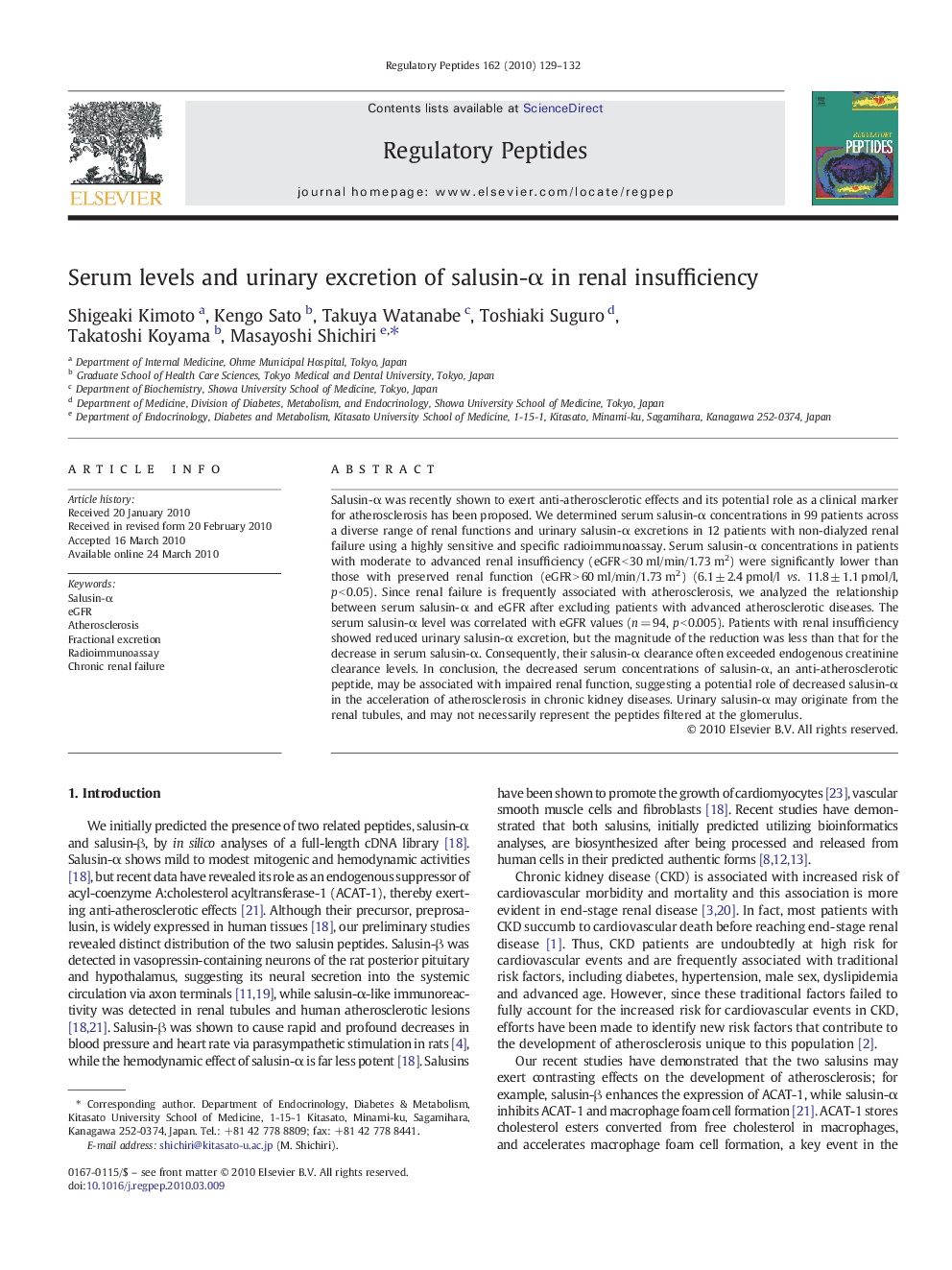| Article ID | Journal | Published Year | Pages | File Type |
|---|---|---|---|---|
| 2022866 | Regulatory Peptides | 2010 | 4 Pages |
Salusin-α was recently shown to exert anti-atherosclerotic effects and its potential role as a clinical marker for atherosclerosis has been proposed. We determined serum salusin-α concentrations in 99 patients across a diverse range of renal functions and urinary salusin-α excretions in 12 patients with non-dialyzed renal failure using a highly sensitive and specific radioimmunoassay. Serum salusin-α concentrations in patients with moderate to advanced renal insufficiency (eGFR < 30 ml/min/1.73 m2) were significantly lower than those with preserved renal function (eGFR > 60 ml/min/1.73 m2) (6.1 ± 2.4 pmol/l vs. 11.8 ± 1.1 pmol/l, p < 0.05). Since renal failure is frequently associated with atherosclerosis, we analyzed the relationship between serum salusin-α and eGFR after excluding patients with advanced atherosclerotic diseases. The serum salusin-α level was correlated with eGFR values (n = 94, p < 0.005). Patients with renal insufficiency showed reduced urinary salusin-α excretion, but the magnitude of the reduction was less than that for the decrease in serum salusin-α. Consequently, their salusin-α clearance often exceeded endogenous creatinine clearance levels. In conclusion, the decreased serum concentrations of salusin-α, an anti-atherosclerotic peptide, may be associated with impaired renal function, suggesting a potential role of decreased salusin-α in the acceleration of atherosclerosis in chronic kidney diseases. Urinary salusin-α may originate from the renal tubules, and may not necessarily represent the peptides filtered at the glomerulus.
